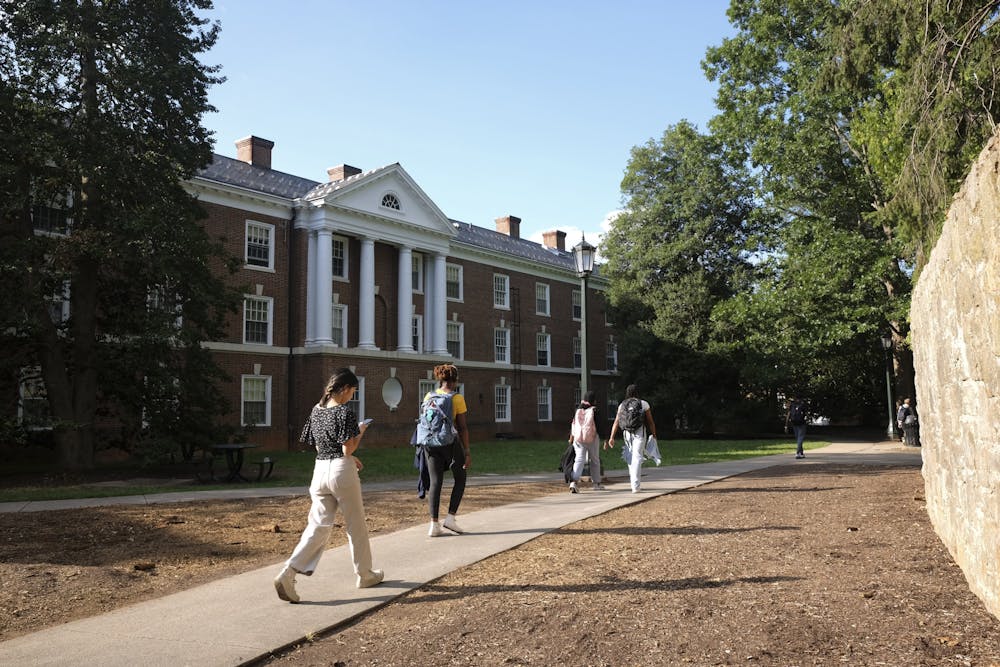After panic spread amongst residential Colleges last week over rumors of closures, student representatives met with administrators who confirmed no final decisions about the future of residential colleges will be made this year. The final decision on these housing options, however, remains uncertain, as the University maintains that all options are on the table.
Leaders of Brown College, a residential college open to students across all years, sent an email to residents Sept. 7 and said that the Office of Student Affairs would be allegedly voting on a plan to eliminate residential colleges in the following weeks. Interim Dean of Students Cedric Rucker met with students Sept. 15, however, and told representatives that the committee responsible for the decision has yet to discuss the topic.
University spokesperson Bethanie Glover affirmed that while the University is working with an external consultant to develop options to house all second-year students on Grounds, no changes will occur this year.
“The second-year housing requirement is still several years out, and will be communicated to future prospective students well ahead of its official implementation so that they are aware of the requirement before joining the University,” Glover said in a written statement to the Cavalier Daily. “No current students' housing plans will be affected.”
This adjustment to housing reflects a central goal of the University's 2023 strategic plan — housing all second-year students on Grounds. There are currently about 1,978 beds available for upperclassmen students, not including residential colleges. This year’s second-year class contains just over 4,000 students.
One of the development projects moving the University towards this goal is construction of new dorms on Brandon Avenue. These dorms are nearing completion and will house an additional 348 upperclassmen. Even with these new spaces, the University must create a minimum of 1,500 new beds in the next six years to accommodate an entire second-year class — this calculation does not account for third and fourth-years staying on Grounds.
An additional 712 beds on Grounds, however, belong to the University’s three residential colleges — tight-knit living and learning communities among students with similar values or passions — that students must apply into.
Brown College — the oldest of the three — offers a unique community where students and faculty live and work in close proximity to each other. The International Residential College is the largest residential college, with international students making up 30 percent of residents. Hereford College focuses on programming regarding sustainability and cultural diversity.
After meeting with Rucker, Lara Howell, grand poobah of Brown College and third-year College student, said she remains uneasy about the long term outcome of Brown and other residential colleges.
“Walking away from the meeting, I was glad I could tell the students I represent that they'll have housing for next year,” Howell said. “But I'm worried about the problems that the future student leaders are going to have to face in residential colleges.”
The University began an external review on the situation with a consulting group last year, according to Howell. Student leaders discussed the importance of residential colleges through sessions with the firm, but the consulting group’s final report was never shared with the public.
The University is still exploring limiting how residential colleges will factor into housing requirements for both under and upperclassmen in coming years.
A presentation obtained by The Cavalier Daily from Brailsford and Dunlavey consulting group lays out three main housing scenarios, including minimized, moderate and maximized development.
Minimized development includes one new 1,500-bed second-year housing development with all residential colleges and nearly all other housing allocated to second-years. This option would reduce third and fourth-year capture to four percent compared to the current 18 percent.
Another option involves adding two new second-year developments totaling 2,100 beds, constructing a 500-bed third and fourth-year building and designating IRC and Hereford for second-years only. Brown College would be reallocated to third and fourth-years.
The most expensive plan requires the construction of 2,600 beds for second years which would allow Brown College and IRC to function in their current capacity as residential colleges. Along with an additional 800-bed upperclassman development, this plan would save the two residential colleges and maintain the current percentage of third and fourth-year students living on Grounds.
None of these three outcomes would maintain Hereford’s status as a residential college. Specifics, including a timeline on these options, were not provided in the portions of the presentation obtained by The Cavalier Daily.
Though the 2030 Plan includes loose goals of keeping third and fourth-years connected to their residential communities, Stepheney Odom-Thomas, Prime Minister of IRC’s council and third-year College student, said the new housing goal pushes upperclassmen out.
“I am concerned overall, with what seems to be a prioritization of first and second-years over third and fourth-years, particularly in regards to the residential colleges, which had a precedent of housing all [four] years [of students],” Odom-Thomas said.
Howell and Odom-Thomas said they would like to continue meetings with administration to understand what the University is planning and how they are prioritizing different housing options.
“I think the biggest thing we want at this point going forward is a seat at the table and to be part of the conversation,” Howell said. “We understand the value that residential colleges bring to the community and to the University as a whole.”







